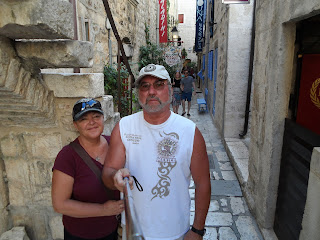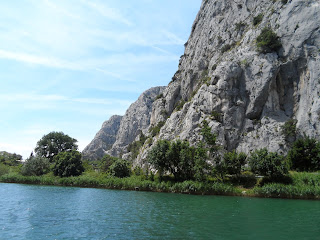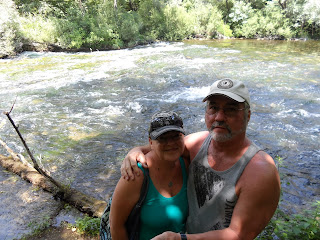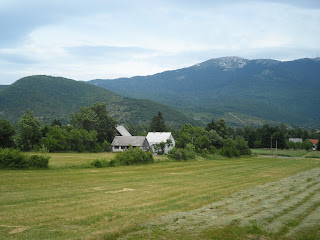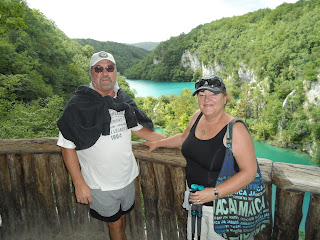We arrived in Dubrovnik after passing through Bosnia-Herzegovina, then back into Croatia. Border guards have not asked us one question yet in the trip (touch wood!), they just stamp our passports and off we go. We finally found our B and B and looked in dismay at the 129 stone steps leading up to it, then looked back at our luggage. Steps were to be a constant theme in Dubrovnik!
Dubrovnik is among the 10 best preserved medieval walled cities in the world, and is on the UNESCO list of World Heritage Sites. Although it was demilitarized in the 1970s to protect it from war, in 1991, after the breakup of Yugoslavia, it was besieged by the Serb and Montenegrin soldiers for seven months and suffered significant damage from shelling. The heaviest artillery attack was on December 6 with 19 people killed and 60 wounded. A total of 117 civilians were killed.
After getting settled, we head off to the walled “Old Town” walked down from our B and B, and then descended another couple of hundreds of steps to sea level to explore the town. (A few years ago a research team armed with cameras and recording devices spent time counting all the steps. They discovered there are a grand total of 4,343 steps within the perimeter of the wall.) The day was overcast, and by the time we had decided to stop for lunch, the skies were threatening. We had been convinced by a barker to try a Mexican restaurant, where I had fun teaching the Croatian waiters some Spanish phrases. No sooner had we sat down than it began to POUR rain. Although we were all getting soaked even under the awnings, we all had a good laugh about it. It rained so hard that it created sink holes in some of the main streets where the underpinnings of asphalt roads had been washed away.
The city boasts of many old buildings, such as the Arboretum Trsteno, the oldest arboretum in the world, dating back to before 1492. Also, the third oldest European pharmacy is located in the city, which dates back to 1317 (and is the only one still in operation today). The architecture is stunning, and the back streets evoke the spirit of "Game of Thrones" (Filmed here in Dubrovnik!)
That night, exhausted from the travel and the hundreds of steps back up out of Old Town and up to our B and B, we decided that I should cook dinner in our tiny kitchen. My good friend J. B. Harrison often posts heartfelt thoughts on Facebook about appreciating family and friends, and of course, those things always are near and dear to us, but I have to say that travel has taught me also to appreciate many things that we sometimes might take for granted – like cooking in a kitchen that is larger than 12 inches by four feet. Nevertheless, I acquitted myself adequately by cheffing up a dinner of chicken in a cream sauce with garlic, onion, mushrooms, wine, steak spice, milk – pronounced by my bride to be delicious.
Next day we braved the steps again to walk on top of the city walls. The walls have a grand total of 1,080 steps which does include the three entrances. The views were well worth it.
In the bay of Dubrovnik is the 72-hectare wooded island of Lokrum, where according to legend, Richard the Lionheart was cast ashore after being shipwrecked in 1192. On our last day, we took the boat ride to the island where we had a pleasant hike with peacocks wandering across our path. On our travel day to Athens/Piraeus, we decided to carry all our bags down the steps and walk the 2 km to the bus station with our new-found super-legs!
 |
| Some of the MANY steps! |
 |
| A Windblown Lorraine on the Walls |
 |
| Approaching Dubrovnik by Sea |
 |
| Beautiful Peacocks on Lokrum |

